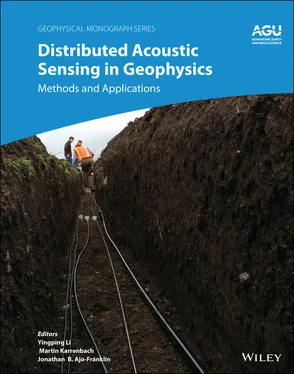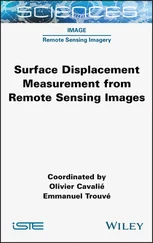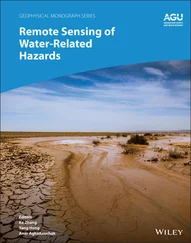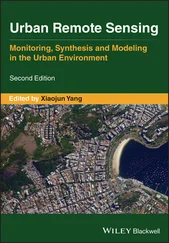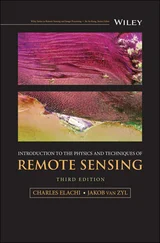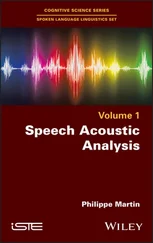7 Harma, A., McKinney, M. F., & Skowronek, J. (2005). Automatic surveillance of the acoustic activity in our living environment. Paper presented at 2005 IEEE International Conference on Multimedia and Expo, Amsterdam, Netherlands.
8 He, X., Xie, S., Liu, F., Cao, S., Gu, L., Zheng, X., & Zhang, M. (2017). Multi‐event waveform‐retrieved distributed optical fiber acoustic sensor using dual‐pulse heterodyne phase‐sensitive OTDR. Optics Letters, 42(3), 442–445. doi: 10.1364/OL.42.000442
9 Jagannathan, S., Bertsatos, I., Symonds, D., Chen, T., Nia, H., Jain, A. D., et al. (2009). Ocean acoustic waveguide remote sensing (OAWRS) of marine ecosystems. Marine Ecology Progress Series, 395, 137–160. doi:10.3354/meps08266
10 Jousset, P., Reinsch, T., Ryberg, T., Blanck, H., Clarke A., Aghayev R., et al. (2018). Dynamic strain determination using fibre‐optic cables allows imaging of seismological and structural features. Nature Communications, 9(1), 2509. doi:10.1038/s41467‐018‐04860‐y
11 Loranger, S., Gagné, M., Lambin‐Iezzi, V., & Kashyap, R. (2015). Rayleigh scatter based order of magnitude increase in distributed temperature and strain sensing by simple UV exposure of optical fibre. Scientific Reports, 5, 11177. doi: 10.1038/srep11177
12 Martins, H. F., Martin‐Lopez, S., Corredera, P., Filograno, M. L., Frazão, O., & Gonzalez‐Herraez, M. (2013). Coherent noise reduction in high visibility phase‐sensitive optical time domain reflectometer for distributed sensing of ultrasonic waves. Journal of Lightwave Technology, 31(23), 3631–3637. doi:10.1109/JLT.2013.2286223
13 Masoudi, A., Belal, M., & Newson, T. P. (2013). A distributed optical fibre dynamic strain sensor based on phase‐OTDR. Measurement Science and Technology, 24(8), 085204. doi:10.1088/0957‐0233/24/8/085204
14 Mateeva, A., Lopez, J., Potters, H., Mestayer, J., Cox, B., Kiyashchenko, D., et al. (2014). Distributed acoustic sensing for reservoir monitoring with vertical seismic profiling. Geophysical Prospecting, 62(4), 679–692. doi: 10.1111/1365‐2478.12116
15 Mateeva, A., Mestayer, J., Cox, B., Kiyashchenko, D., Wills, P., Lopez, J., et al. (2012). Advances in Distributed Acoustic Sensing (DAS) for VSP. Paper presented at SEG Annual Meeting, Society of Exploration Geophysicists.
16 Mestayer, J., Cox, B., Wills, P., Kiyashchenko, D., Lopez, J., Costello, M., et al. (2011). Field trials of distributed acoustic sensing for geophysical monitoring. Paper presented at SEG Annual Meeting, Society of Exploration Geophysicists.
17 Michaels, T. E., Michaels, J. E., Mi, B., & Ruzzene, M. (2005). Damage detection in plate structures using sparse ultrasonic transducer arrays and acoustic wavefield imaging. AIP Conference Proceedings, 760, 938–945. https:// doi.org/10.1063/1.1916774
18 Molenaar, M. M., Hill, D., Webster, P., Fidan, E., & Birch, B. (2012). First downhole application of distributed acoustic sensing for hydraulic‐fracturing monitoring and diagnostics. SPE Drilling & Completion, 27(01), 32–38. doi:10.2118/140561‐MS.7
19 Ni, S., Kanamori, H., & Helmberger, D. (2005). Seismology: Energy radiation from the Sumatra earthquake. Nature, 434(7033), 582. doi: 10.1038/434582a
20 Ni, S., Tan, E., Gurnis, M., & Helmberger, D. (2002). Sharp sides to the African superplume. Science, 296(5574), 1850–1852. doi: 10.1126/science.1070698
21 Wang, S., Fan, X., Liu, Q., & He, Z. (2015). Distributed fiber‐optic vibration sensing based on phase extraction from time‐gated digital OFDR. Optics Express, 2015, 23(26), 33301–33309. doi: 10.1364/OE.23.033301
22 Yamate, T., Fujisawa, G., & Ikegami, T. (2017). Optical sensors for the exploration of oil and gas. Journal of Lightwave Technology, 35(16), 3538–3545. doi: 10.1109/JLT.2016.2614544
23 Yang, M., Bai, W., Guo, H., Wen, H., Yu, H., & Jiang, D. (2016). Huge capacity fiber‐optic sensing network based on ultra‐weak draw tower gratings. Photonic Sensors, 6(1), 26–41. doi:10.1007/s13320‐015‐0298‐0
24 Zhu, F., Zhang, Y., Xia, L., Wu, X., & Zhang, X. (2015). Improved Φ‐OTDR sensing system for high‐precision dynamic strain measurement based on ultra‐weak fiber Bragg grating array. Journal of Lightwave Technology, 33(23), 4775–4780. doi: 10.1109/JLT.2015.2477243
4 Distributed Acoustic Sensing System Based on Phase‐Generated Carrier Demodulation Algorithm
Tuanwei Xu, Shengwen Feng, Fang Li, Lilong Ma, and Kaiheng Yang
Key Laboratories of Transducer Technology, Institute of Semiconductors, Chinese Academy of Sciences, Beijing, China; and
College of Materials Science and Opto-Electronic Technology University of Chinese Academy of Sciences, Beijing, China
We demonstrate a real‐time distributed acoustic sensing (DAS) system based on phase‐sensitive optical time domain reflectometry (Φ‐OTDR) and phase‐generated carrier (PGC) demodulation algorithm. An unbalanced Michelson interferometer (MI) with specific phase modulation is introduced to overcome phase fading caused by initial phase shift in fiber optic interferometer sensing. Owing to its relatively low data requirement and polarization‐independent structure, PGC‐DAS system exhibits the superiorities of real‐time signal processing and Rayleigh polarization‐induced fading suppression. A proof‐of‐concept system is constructed to demonstrate feasibility and sensing performance. Corresponding to the average phase noise of ~5 × 10 ‐4rad/√Hz, a strain sensitivity of 8.5 pε/√Hz is achieved with a spatial resolution of 10 m, as well as a frequency response range of 2 Hz to 1 kHz over 10 km sensing distance. Further, a field trial of this system is presented to validate it in qualitative seismic monitoring on land.
DAS is an advanced technique developed in recent years to accurately measure ground vibration via fiber optic cables. DAS presents a possible new frontier for recording earthquake waves and other seismic signals in a wide range of research and public safety arenas (Juarez et al., 2005; Parker et al., 2014; Tanimola & Hill, 2009). It repurposes standard telecommunication fiber optic cables as a long series of single‐component, in‐line strain, or strain‐rate sensors, which is a completely different way from conventional deployments of nodal devices. DAS can sample passing seismic waves at locations every few meters or closer along paths stretching for tens of kilometers. Therefore, DAS has many advantages, such as passivity, resistance to electromagnetic interference, and cost‐effectiveness.
φ‐OTDR is one of the most widely used schemes to achieve distributed strain or strain‐rate sensing. In the early stage, research focused on detecting the interfering Rayleigh backscattering (RB) amplitude in the sensing fiber. In 1993, Taylor and Lee first monitored intrusion events by detecting RB intensity changes with Φ‐OTDR technology (Taylor & Lee, 1993). However, the nonlinearity between RB amplitude and vibration could not satisfy the need for quantitative seismic measurement in local and regional seismology. Then, researchers began to investigate phase term (Feng et al., 2018; Sha et al., 2017; Yan et al., 2017; Yang et al., 2018; Zinsou et al., 2019), which is almost linear to strain. Currently available DAS systems have characteristics in common that they use pulsed lasers to interrogate optical fibers and process RB phase to provide a nearly continuous estimate of fiber dynamic strain along the fiber. In general, they differ in the method to process RB light and may be separated into coherent detection, dual‐pulse detection, and interferometer detection (Hartog, 2017). Coherent detection represents the fact that the phase is extracted by mixing RB signal and local oscillator (He et al., 2017; Lu et al., 2010; Wang et al., 2016). Dual‐pulse detection uses two separate RBs with different probe frequencies or phases (Alekseev et al., 2014a, 2014b; Alekseev et al., 2015). Interferometer detection processes RB phase by mixing with itself with a time delay (Masoudi et al., 2013; Wang, Wang, et al., 2015; Wang, Shang, et al., 2015). A coherent heterodyne demodulation DAS system was proposed by Lu et al. (2010). The phase information of heterodyne signal was obtained by mixing the electrical driving signal of acoustic optical modulator (AOM); a spatial resolution of 5 m and a frequency response range of 1 kHz were achieved; and signal‐to‐noise ratio (SNR) was increased to 6.5 dB with 100 averaging times. To overcome polarization‐induced signal fading, an improved polarization‐maintaining scheme was presented (Qin et al., 2011). Further, a kind of double‐pulse approach was proposed by Alekseev et al. (2014b), which used phase‐modulated probe signals with predefined different phase shift sequences of 0, −2/3π, and 2/3π. The system demonstrated a distributed phase monitoring capability over 2 km range with 100 Hz sinusoidal strain from piezoceramic modulator. Another dual‐pulse DAS system with different frequency shifts was investigated by He et al. (2017). Combined with heterodyne demodulation, the strain frequency response was in the range of 50 Hz to 25 kHz, with a 0.9‐73 rad amplitude on a 470 m long optical fiber. There are two kinds of interferometer DAS systems based on 3 × 3 coupler or PGC demodulation algorithm. For the former, a symmetric 3 × 3 coupler is adopted to eliminate slow phase shift of the interferometer (Sheem, 1981); the interference phase formed by self‐delay of RB in a single pulse is recovered by using the feature of coupler with a phase difference of ±120° between output ports. Such an alternative approach was demonstrated by Masoudi et al. (2013); the demonstrated setup has a spatial resolution of 2 m with a frequency range of 500‐5000 Hz along 1 km optical fiber (Masoudi et al., 2013). Because of three detectors and a sampling rate of 300 MSa/s per channel, the total data size would reach around 900 MSa/s, which leads to a huge challenge to realize real‐time data processing. For PGC‐DAS system (Fang et al., 2015), a PGC was introduced to overcome the initial phase shift problem (Dandridge et al., 1982), and an unbalanced MI with Faraday rotator mirrors (FRMs) was implemented to eliminate the influence of polarization fading (Huang et al., 1996). Compared with 3 × 3 demodulation, only one detector is needed, and a relatively low data stream helps to online recover phase information.
Читать дальше
